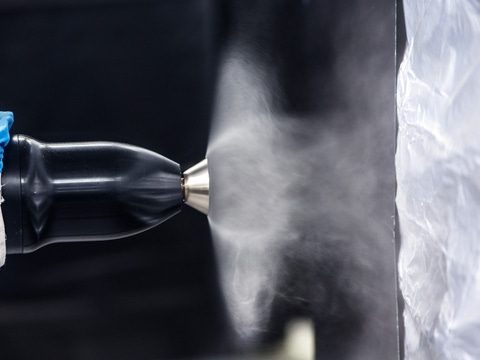Coatings
Efficient processes for future demands
Automotive paint is not delivered as a finished good. It acquires its final properties after the various coats have been successfully applied one after the other under precisely defined conditions. Therefore, the application process is crucial to high-quality results.
When it comes to the application process, our customers are the center of all that we do. We offer tailored product solutions to meet each customer’s technical requirements. We cooperate closely with our customers to optimize the application process continuously. For fast and high-quality service, our application engineers support the paint shop on-site.
More efficiency with the Integrated Process
To reduce costs and make processes even more efficient and eco-friendly, we offer products for the Integrated Process II. In this system, the properties of the primer are integrated into the basecoat without compromising the color or properties of the coating. The entire primer application section including drying ovens can be cut out and the paint line shortened. This saves time, material and energy costs, and reduces CO2 emissions by up to 20 percent.

Overspray-Free Application Process
New vehicle design concepts put challenges not only on the process, but also on the paint itself. For instance, the Overspray-Free Application (OFLA) process is a new process designed for two-tone coatings, allowing paint application on defined areas like car roofs, with a 100% transfer efficiency and cost efficiency. We have developed a matching basecoat system which enables this innovative coatings application. With OFLA, both the design variety and individualization of a car can be increased while achieving significant savings in manual work, time and material in the paint line.
Reduction of baking temperature
Another driver for new process and surface solutions is the use of innovative materials and mixed substrates for electric vehicles, making low-bake solutions necessary. The target is to reduce the baking temperature during the coating process. At lower curing temperatures, parts with different substrates can potentially be coated in the same process and paint line. This would also allow new manufacturing and assembly concepts, and energy saving, since drying ovens are one of the most energy consuming part in the entire paint process.
